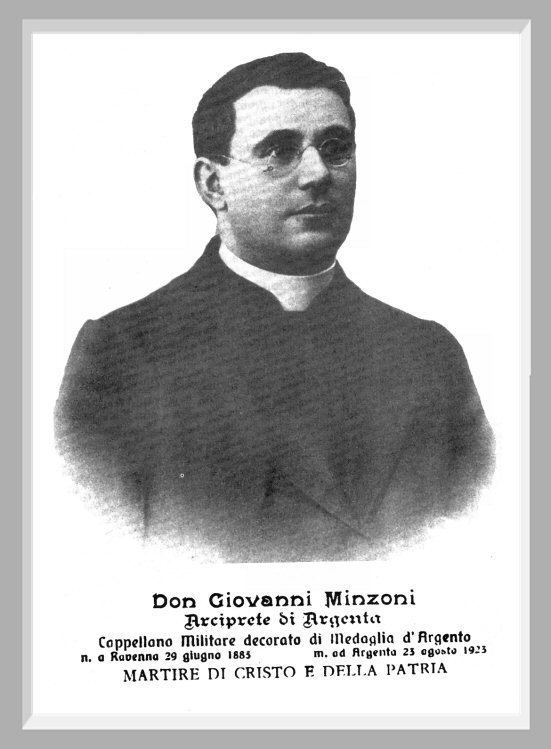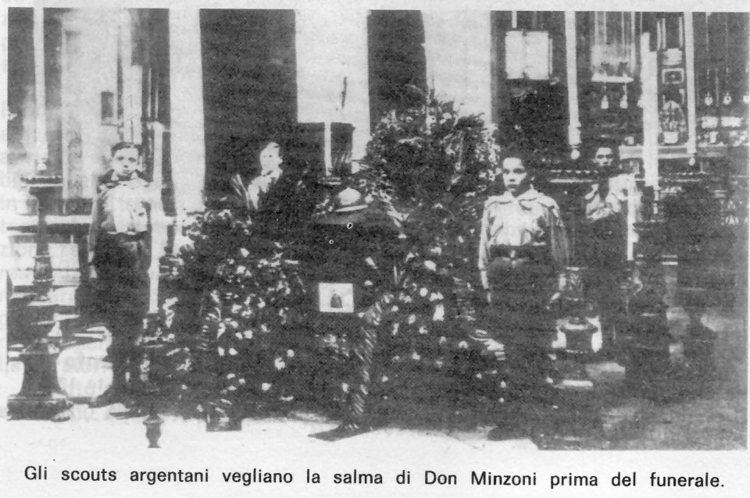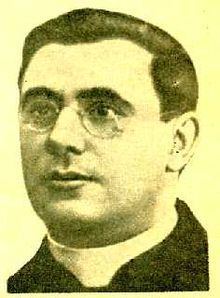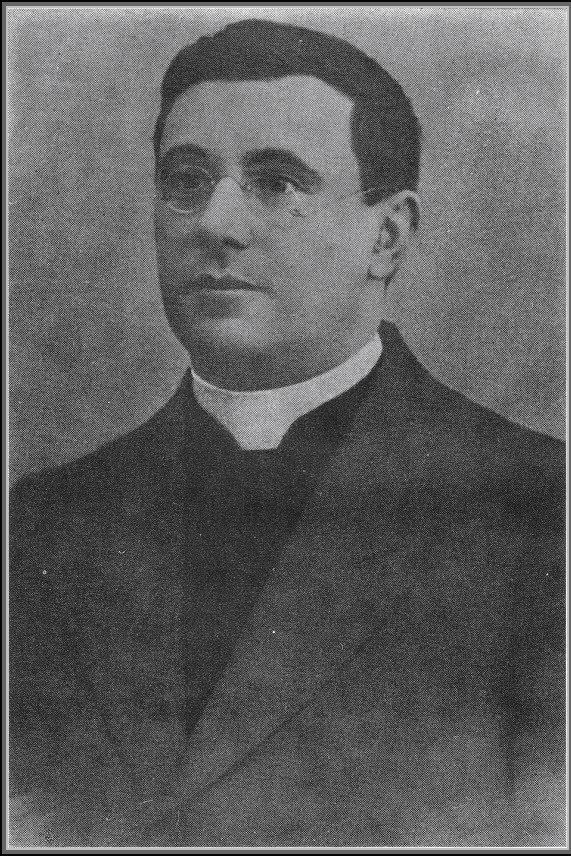Ordained 1909 Name Giovanni Minzoni | Title Father Offices held Army Chaplain | |
 | ||
Died August 23, 1923, Argenta, Italy | ||
don Giovanni Minzoni
monolcale gallipoli sul mare e al centro - via don giovanni minzoni 3, Gallipoli
Giovanni Minzoni was born to a middle-class family. He studied in seminary and in 1909 was ordained priest. The following year he was appointed Deputy Pastor in the town of Argenta (in Emilia-Romagna), which he left in 1912 to go to study in the Scuola Sociale in Bergamo, where he was awarded his degree. Admired both for his courage and determination to cooperate with farmers during World War I Father Minzoni was sent to the front between Italy and Austro-Hungary as an army chaplain.
Contents
- don Giovanni Minzoni
- monolcale gallipoli sul mare e al centro via don giovanni minzoni 3 Gallipoli
- World War I
- Campaign for social rights after World War I
- Antifascism
- Scout movement in Argenta
- Death of Giovanni Minzoni
- Echoes in the Italian press
- Letter to Archbishop of Ravenna by John Paul II
- References

World War I

Called up by the army of the Kingdom of Italy in August 1916, he asked to serve as a military chaplain among the young soldiers at the Italian north-eastern front, and during a very critical moment in the Battle of the Piave River, he showed great courage for which he was awarded the Silver Medal of Military Valor.
Campaign for social rights after World War I

At the end of World War I, Fr Minzoni returned to Argenta, where he joined the Popular Party (Partito Popolare Italiano) the fore-runner of the Christian Democrats. Although this was a rather centrist party, he became friends with the socialist labor union leader Natale Gaiba, who was assassinated by the blackshirts in 1923. This and many other episodes turned him against Fascism. In addition to ideas about social rights, he became increasingly convinced of the need for cooperation, thus becoming an open enemy of the fascist regime that strongly favored corporativism.
Antifascism
After some time Giovanni Minzoni rejected the introduction of the fascist youth movement, the Opera Nazionale Balilla in Argenta, because he preferred to educate the young people of the town in the values of Catholicism. After meeting Father Emilio Faggioli, the founder in April 1917 of the scout group Bologna I, and who became regional assistant for Catholic Scouts in Emilia-Romagna, Minzoni became convinced of the virtues and good values taught by the Scout Movement. He therefore decided to found a scout group in his own parish.
Scout movement in Argenta
In July 1923, Minzoni invited Monsignor Faggioli to speak about the aims of the scouts in the parish hall in Argenta. Local fascists vocally objected to the formation of a youth group not under the control of Mussolini and vowed that no scouts would enter the main square, to which Faggioli replied that the scouts would enter the main square as long as Minzoni was there. More than seventy scouts were subsequently enrolled.
Death of Giovanni Minzoni
Increasingly in conflict with the local Mussolinian establishment, Father Minzoni was killed around 10:30 pm on August 23, 1923 by two fascist "squadristi", who smashed his skull with a club; they were reportedly following orders of the local "Console di Milizia" Italo Balbo, who was so shaken by the scandal that he had to resign temporarily from his post, though all the accused were later acquitted at trial in 1925.
Just before his death, Don Minzoni wrote in his diary:
With an open heart, with a prayer for my persecutors that will never disappear from my lips, I await the tempest, the persecution, maybe even death, for the cause of Christ to triumph.
His death turned his prayer into reality, with a promise made before departing for WWI:
I pray God to let me die, doing my duty as a Priest and an Italian until my last moment, and happy to end my brief life in the supreme sacrifice.
Echoes in the Italian press
After receiving news about the murder of Don Minzoni, Italian newspapers, it:Il Popolo and it:La Voce Repubblicana, still partly free in 1923 extensively covered the murder, and soon disclosed all the direct executors of the fascist murder, and their secret instigator (Italo Balbo), later absolved at trial due to interference and pressure from the fascist squads and media.
A new trial was held after the end of World War II, when the fascists were no longer able to threaten and cover up the truth. The verdict absolved Balbo from all the charges, although the trial ended with the condemnation of two men for second degree murder.
After the war, Giovanni Minzoni became a symbol of the Italian Catholic Resistance, and many books were written about the martyrdom of this lesser parish priest, widely known for his courage and sanctity. As of 2016, his martyrdom was still being commemorated by groups including Azione Cattolica and the Christian Associations of Italian Workers.
Letter to Archbishop of Ravenna by John Paul II
Don Minzoni died as a "victim of choice" at the hands of blind and brutal violence, but the essence of his sacrifice goes further than a simple opposition to a repressive regime, and puts him at the level required by the Catholic Faith. His spiritual attractiveness, exerted upon the people of those small towns, over the laborers and especially over the young, was the factor which triggered the aggression (against him). They especially wanted to hack at the roots of his teaching work, which aimed at raising young people to prepare them for both a Christian life and a commitment to changing and improving society. For these reasons, the Catholic Scouts have a debt towards him.
